Why these are the Most Popular Zebu Cattle Breeds in Bangladesh & All Around The World?
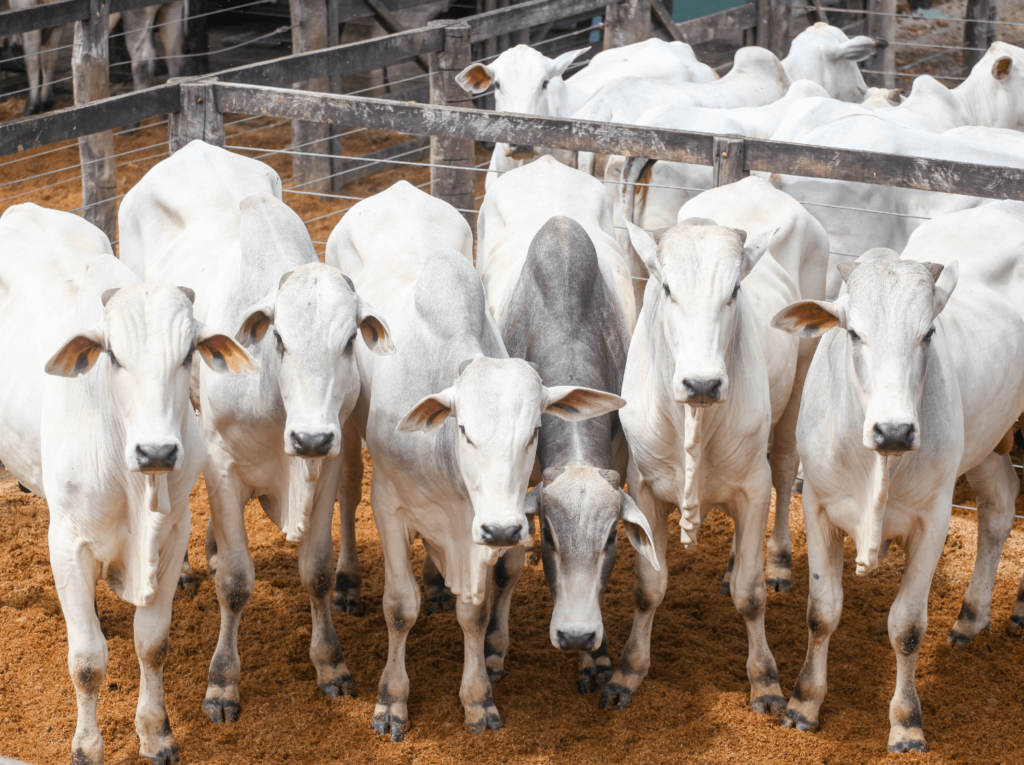
The right selection of Zebu Cattle Breeds in Bangladesh and all tropical countries is essential to the success of cattle farming. Zebu cattle breeds, one of the many available breeds, have grown in popularity recently due to their ability to adapt to many climates, resistance to diseases, and high meat and milk production. We will introduce you to the top 10 Zebu cattle breeds for cattle farming in this post, along with a thorough explanation of their characteristics, advantages, and drawbacks.
Brahman:

Brahman is one of the most popular zebu cattle breeds that originated in India and was developed in the United States. This breed is renowned for its strong reproductive rates, disease resilience, and tolerance to heat. Brahman cattle make great foragers and environmental adapters, which makes them perfect for breeding with other breeds. However, given that they have a reputation for being aggressive and difficult to manage, their disposition can be hard.
Table of Contents
Nellore:
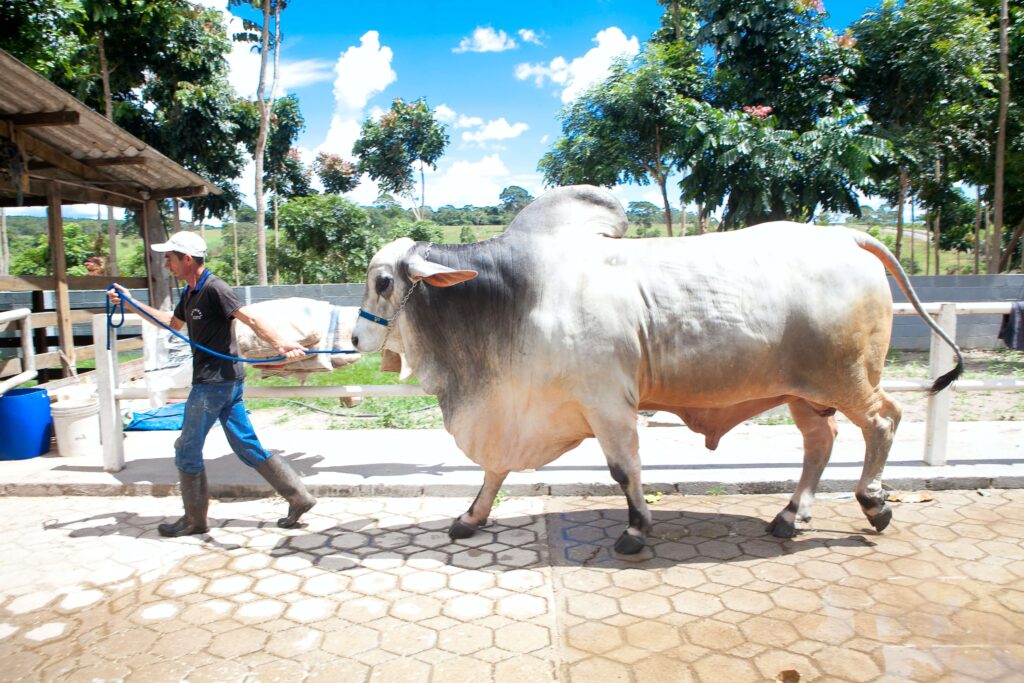
The Brazilian Zebu cattle breed Nellore is well-known for producing high-quality meat and adapting to tropical climes. Nellore cattle are favored for commercial beef production because they are resilient to parasites and have high reproductive rates. However, to preserve their productivity and health, they need management and a high-quality diet.
Gir:
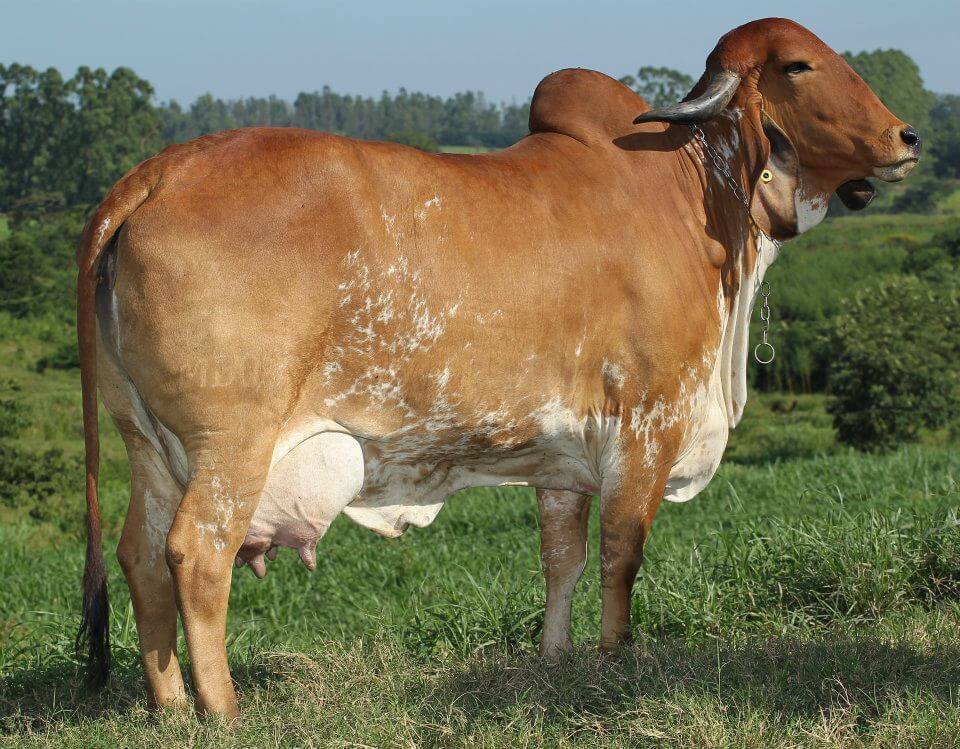
The Gir breed of zebu cattle originated in India. Gir cow milk production is high and it is renowned for high-quality milk yield and gentle behavior. Gir cattle are excellent for dairy farming in tropical areas since they are resistant to diseases and heat stress. They produce less meat than other breeds, though, and in unfavorable climatic conditions, they may produce less milk.
Guzerat (Kankrej):

Guzerat or Kankrej, are native to India and are renowned for their high-quality meat production, disease resistance, and heat tolerance. Cattle from the guzerat (kankrej) breed make exceptional foragers that are well-suited to wide grazing systems. They can also survive in difficult conditions. Compared to other breeds, they produce less milk, and their behaviors can be unpredictable.
Sahiwal:
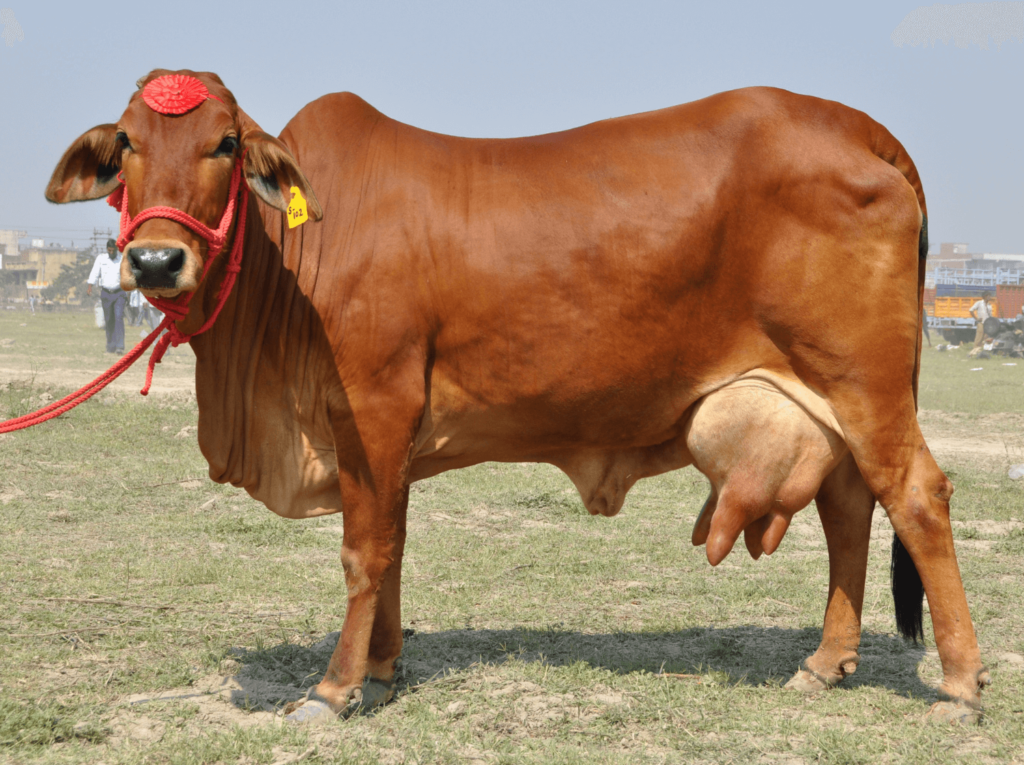
Sahiwal is a breed of zebu cattle from Pakistan. Sahiwal cow is renowned for its high milk production, adaptability to various conditions, and disease tolerance. Sahiwal cows are perfect for dairy farming and crossbreeding with other breeds since they are gentle and simple to handle. They produce less meat than other breeds, though, and the environment can have an impact on the quality of their milk.
Red Sindhi:
Red Sindhi is a breed of zebu cattle from Pakistan that is well-known for its ability to thrive in tropical climes, produce high-quality beef, and be disease-resistant. Cattle from Red Sindhi are excellent milk producers and can survive in tough conditions, which makes them perfect for large-scale grazing systems. They are known to be aggressive and unpredictable, which makes their temperament difficult.
Ongole
Ongole is an Indian zebu cow breed recognized for producing high-quality beef, heat tolerance, disease resistance, and adaptation to various conditions. Ongole cattle are also good foragers and can survive in large grazing systems, making them ideal for crossbreeding with other breeds. In contrast to other breeds, they produce less milk, and their disposition can be erratic.
Mirkadim cattle (Munshiganj cattle)
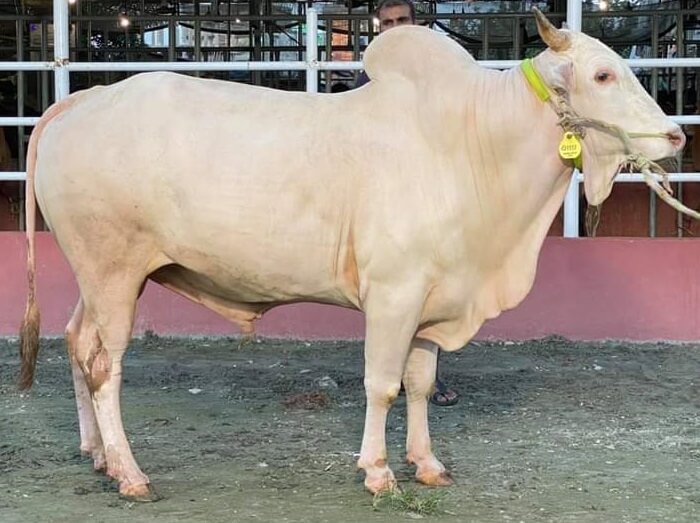
Mirkadim cattle, also known as Munshiganj cattle, are a breed of zebu cattle that originated in the Munshiganj district of Bangladesh. They are one of the country’s oldest cattle breeds, having a history that date back more than 200 years.
They are especially well-suited to Bangladesh’s wetland environments, where they can easily negotiate muddy terrain and shallow water.
The ability of Mirkadim cattle to tolerate high amounts of salinity in their drinking water is one of their distinguishing qualities. This makes them ideal for Bangladesh’s coastal regions, where saltwater intrusion is a major concern.
Mirkadim cattle are a highly valued and unique breed of zebu cattle native to Bangladesh’s Munshiganj area. They are well-suited to Bangladesh’s wetland and coastal environments and are highly prized for their strength, durability, and flexibility.
Red Chittagong Cattle (RCC):
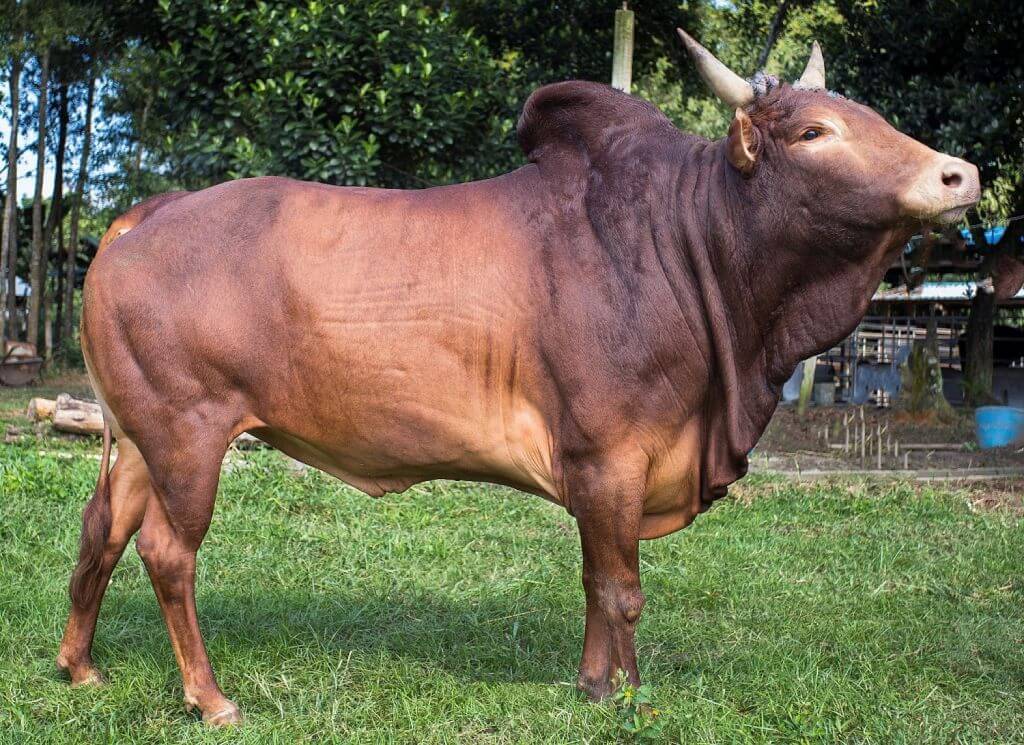
The Red Chittagong Cattle (RCC) is a rare breed of zebu cattle native to Bangladesh. It is well known for its toughness, adaptability, and resistance to many common cow diseases. They have a characteristic reddish-brown coat and big curving horns that are longer in males than females. These animals are well-adapted to Bangladesh’s hot and humid climate, and they can graze on low-quality fodder while surviving on very little water. They are also resistant to a wide range of common cattle diseases, including foot-and-mouth disease and tick fever.
In Bangladesh, Red Chittagong Cattle mainly serve for meat production, although they are also used for plowing fields and transportation. They are especially valuable to small-scale farmers and rural communities, who rely on their hardiness and adaptability.
North Bengal Grey (NBG) Cattle
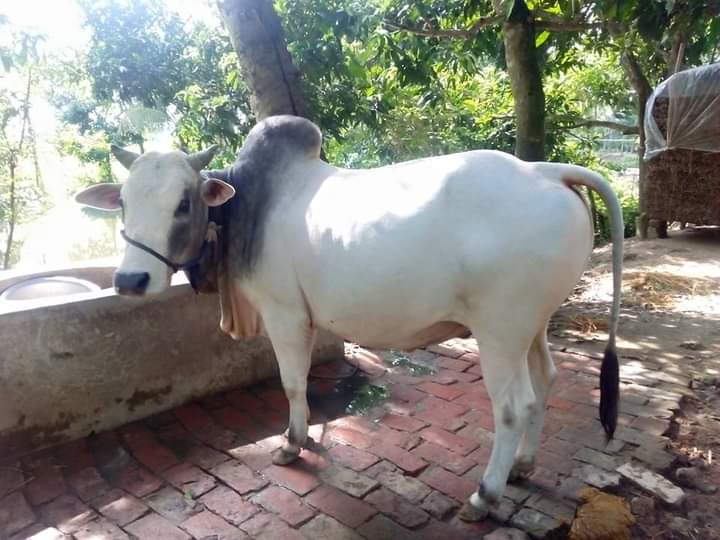
The North Bengal Grey (NBG) cattle are an indigenous cattle breed found primarily in the northern part of Bangladesh. Their coat is distinctively gray, with a deeper hue around the neck and shoulders. They are well-adapted to Bangladesh’s hot and humid climate and can graze on low-quality food while surviving on very little water. They are also resistant to a wide range of common cattle diseases, including foot-and-mouth disease and tick fever.
In Bangladesh, North Bengal Gray cattle are mostly utilized for meat production, although they are also used for plowing fields and transportation.
Benefits of raising Zebu cattle breeds in Bangladesh and other Tropical countries.
Zebu cattle, commonly known as humped cattle, are a type of bovine that is abundant in tropical areas. These cattle are well adapted to thrive in hot and humid climates, making them a popular choice for farmers in tropical areas. However, as with any farming approach, zebu cattle rearing in tropical regions has both advantages and disadvantages.
Advantages of Zebu Cattle Breeds
Adaptability: Zebu cattle, particularly in tropical settings, are very adaptable to harsh and changing weather conditions. They can withstand high temperatures and are resistant to a variety of tropical diseases. They may even live on low-quality fodder and require little attention.
Drought resistance: Zebu cattle are well-known for their drought resistance. They can go for long periods without water, making them perfect for places with low water resources.
Meat quality: Zebu cattle meat is of good quality, with minimal fat and cholesterol levels. As a result, it is a healthy and nutritious food alternative for customers.
Milk production: Zebu cattle can produce a substantial amount of milk, which can be consumed or sold for profit.
Resilience: Zebu cattle are resistant to many of the diseases and pests that often affect cattle in tropical areas. They also live a long time and can produce progeny well into their elderly age.
Disadvantages of Zebu Cattle Breeds
Slow growth rate: Zebu cattle grow at a slower rate than other cattle breeds. This can lead to lengthier feeding times, which can raise production costs.
Temperament: Zebu cattle are prone to being aggressive and temperamental, making them tough to handle and manage. This increases the possibility of damage to farmers and workers.
Limited export market: Zebu cattle have a restricted market, with most demand coming from local populations. The international beef export market is mostly dominated by European beef cattle breeds. Farmers may find it difficult to sell their products in the global market and make a profit as a result of this.
Limited genetic diversity: Zebu cattle have a limited genetic diversity, which increases the danger of inbreeding and genetic abnormalities.
High parasite load: Zebu cattle are more sensitive to parasitic infections than other cattle breeds. This can lead to higher healthcare expenses and lower productivity.
Overall, zebu cattle husbandry in tropical areas can be beneficial and detrimental. While these cattle are well-adapted to hot, humid climates and can produce high-quality meat and milk, they can also be tough to handle and have little market demand. Before investing in zebu cattle farming, farmers should carefully evaluate these considerations.
Join with us
To know more about different cattle breeds and their feeding techniques read our blog. Join our Facebook page and subscribe to our youtube channel. Also, you can follow us on Twitter.
